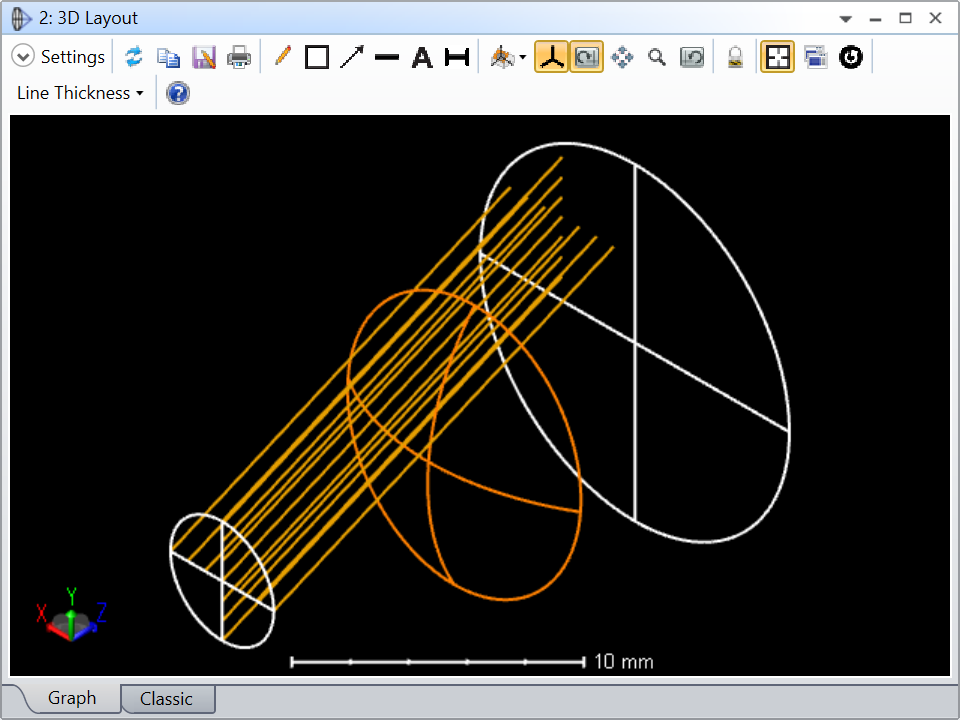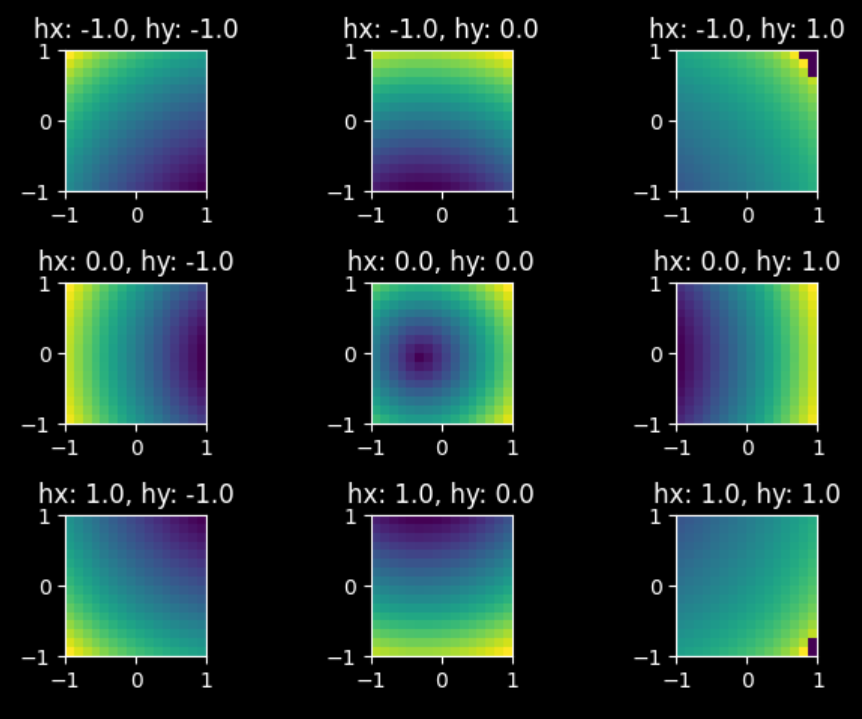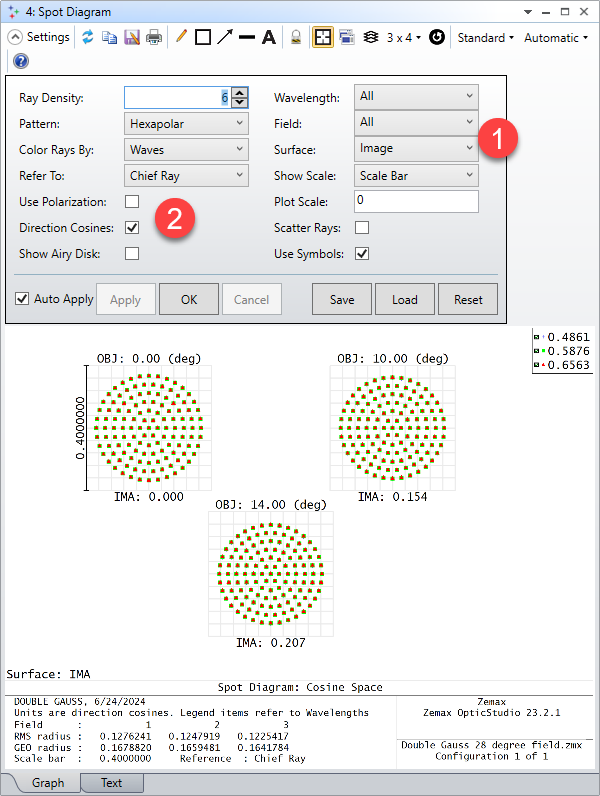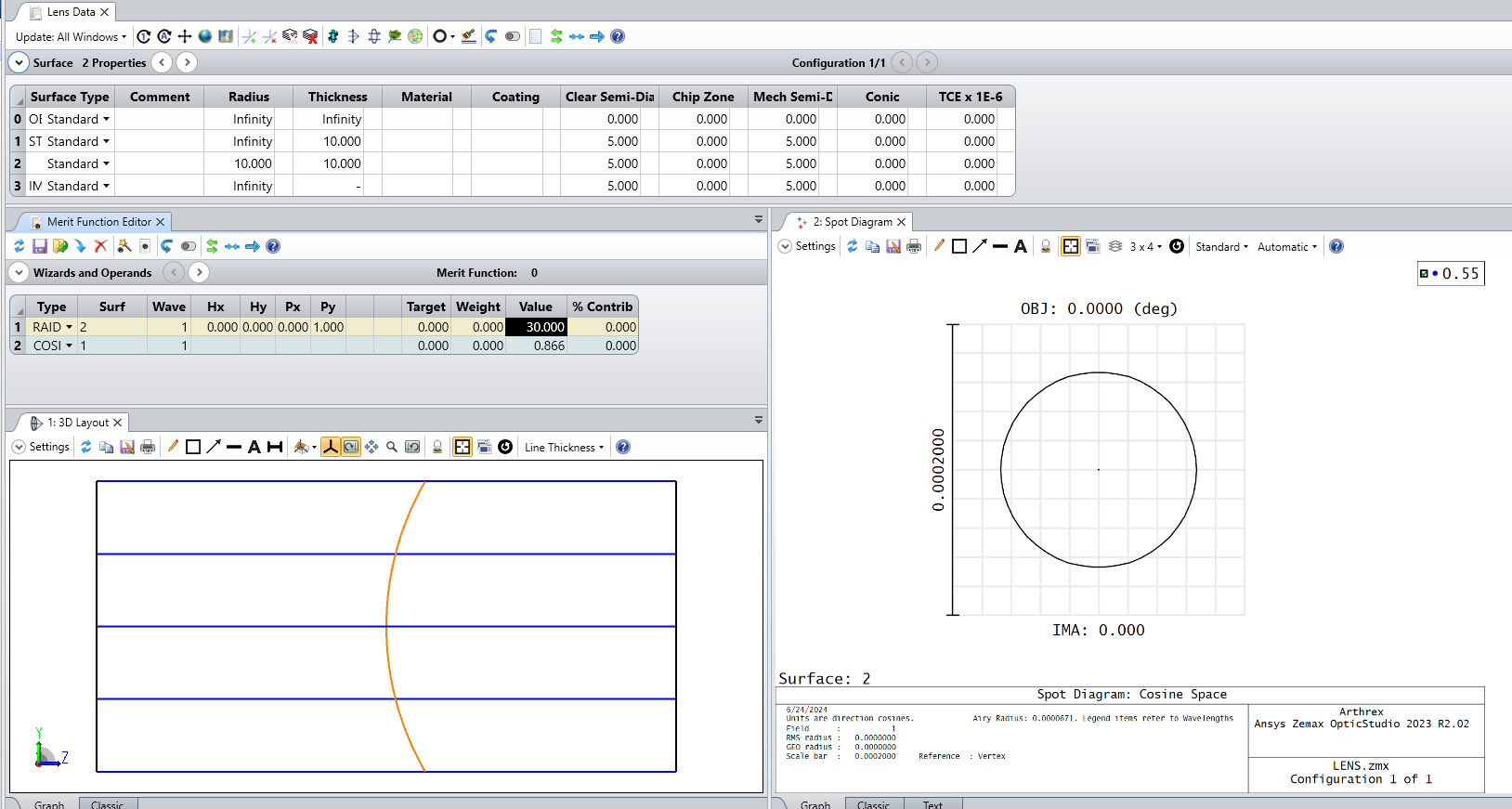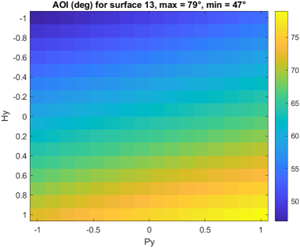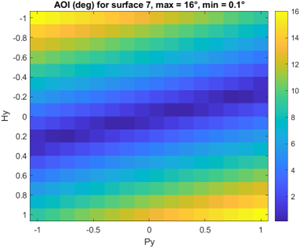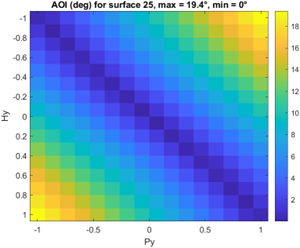Hi everyone,
I'm looking for a way to plot ray incidence angles for a given surface. While RAID allows this for individual rays, I'm interested in a plot, similar to the ‘Incident Angle vs. Image Height’ plot, but applicable to an arbitrary surface.
Ideally, it would be a 2D plot that shows the incidence angle over field and pupil coordinates. I've explored using the universal plot, but it doesn't seem straightforward since you can't vary the Hy, Py inputs to the merit function directly.
I realize this can be achieved with a custom script, and I’m hoping someone might already have a solution or be willing to share something that accomplishes this.
Thanks in advance for any help!





